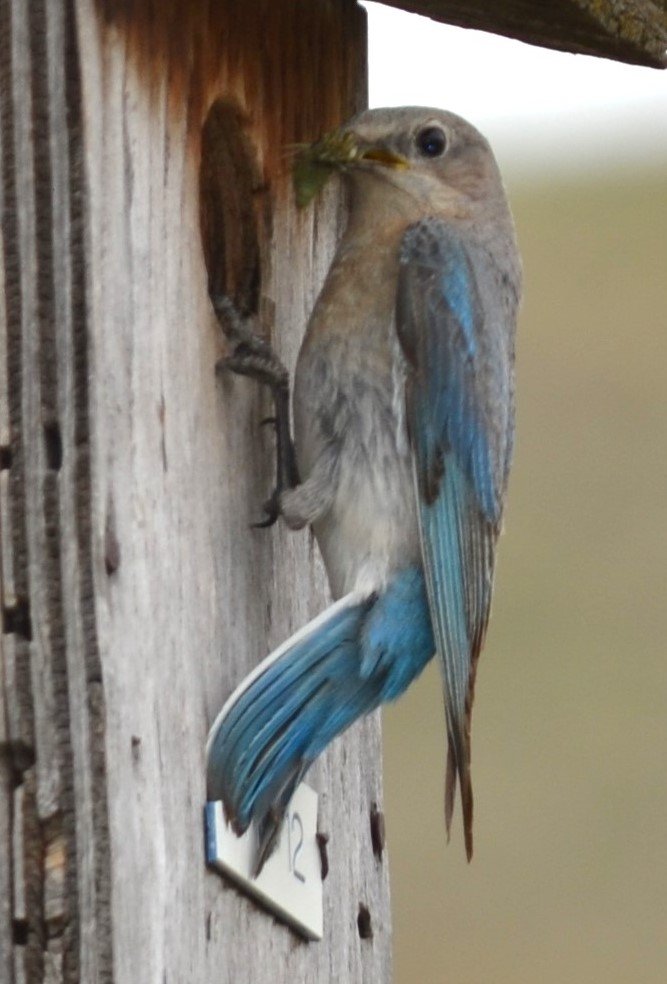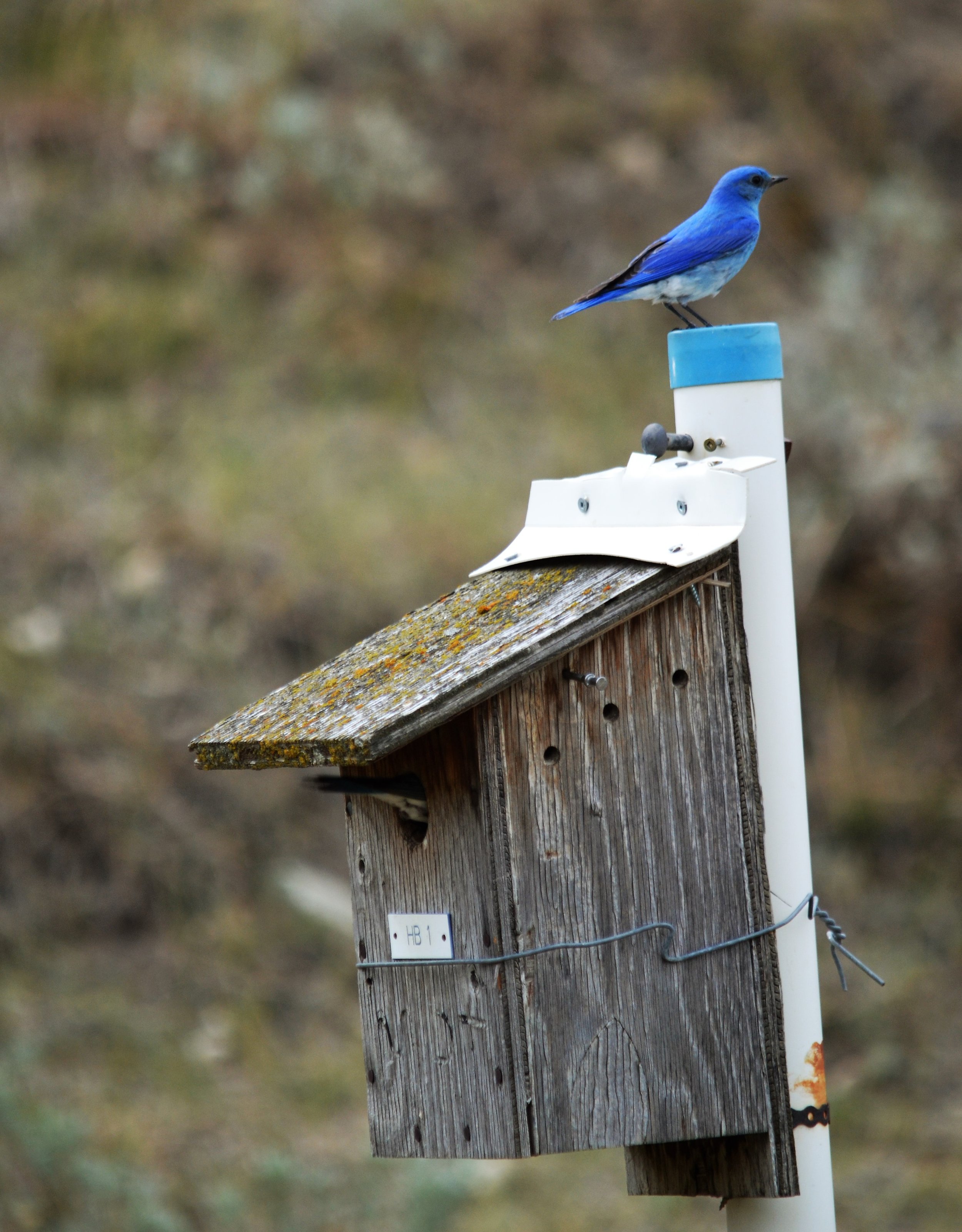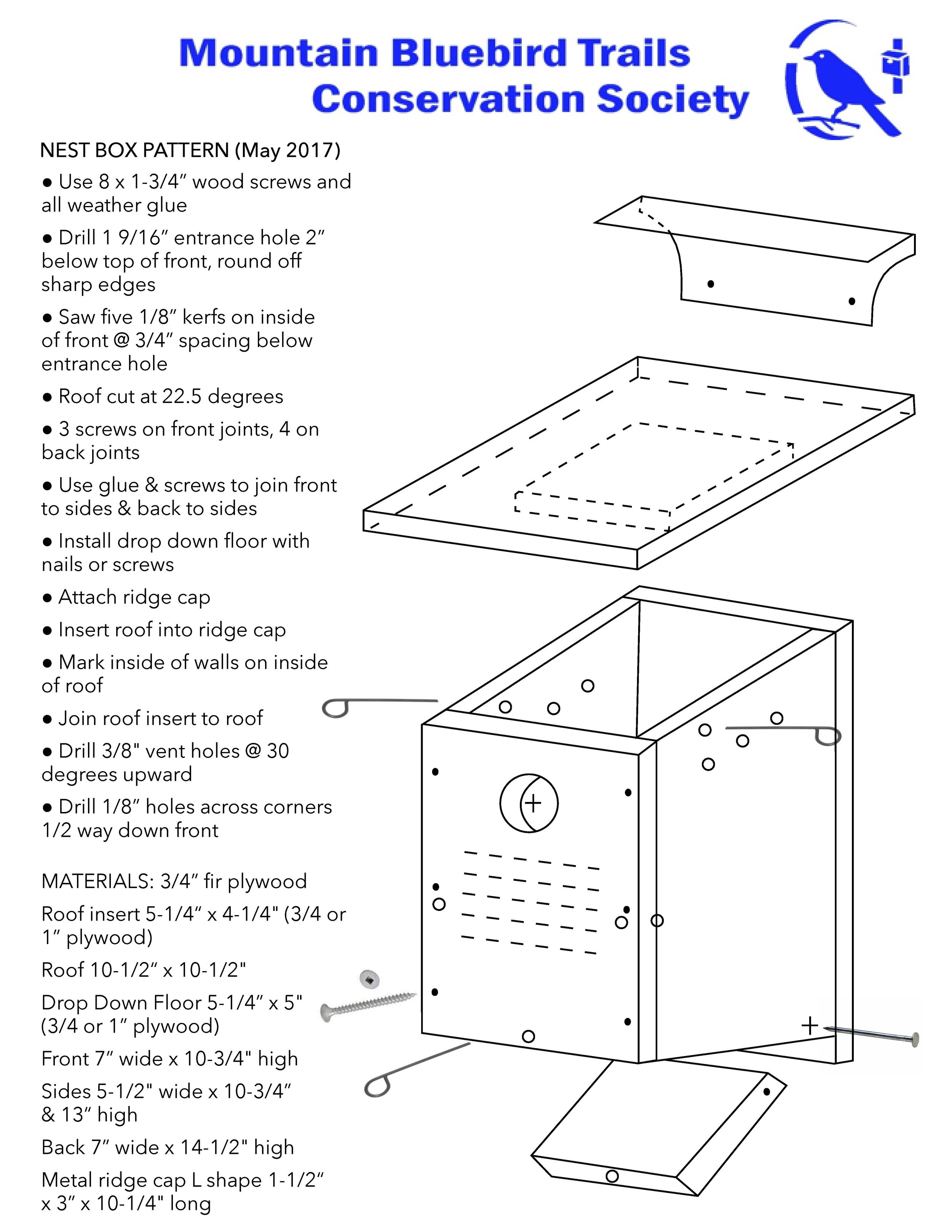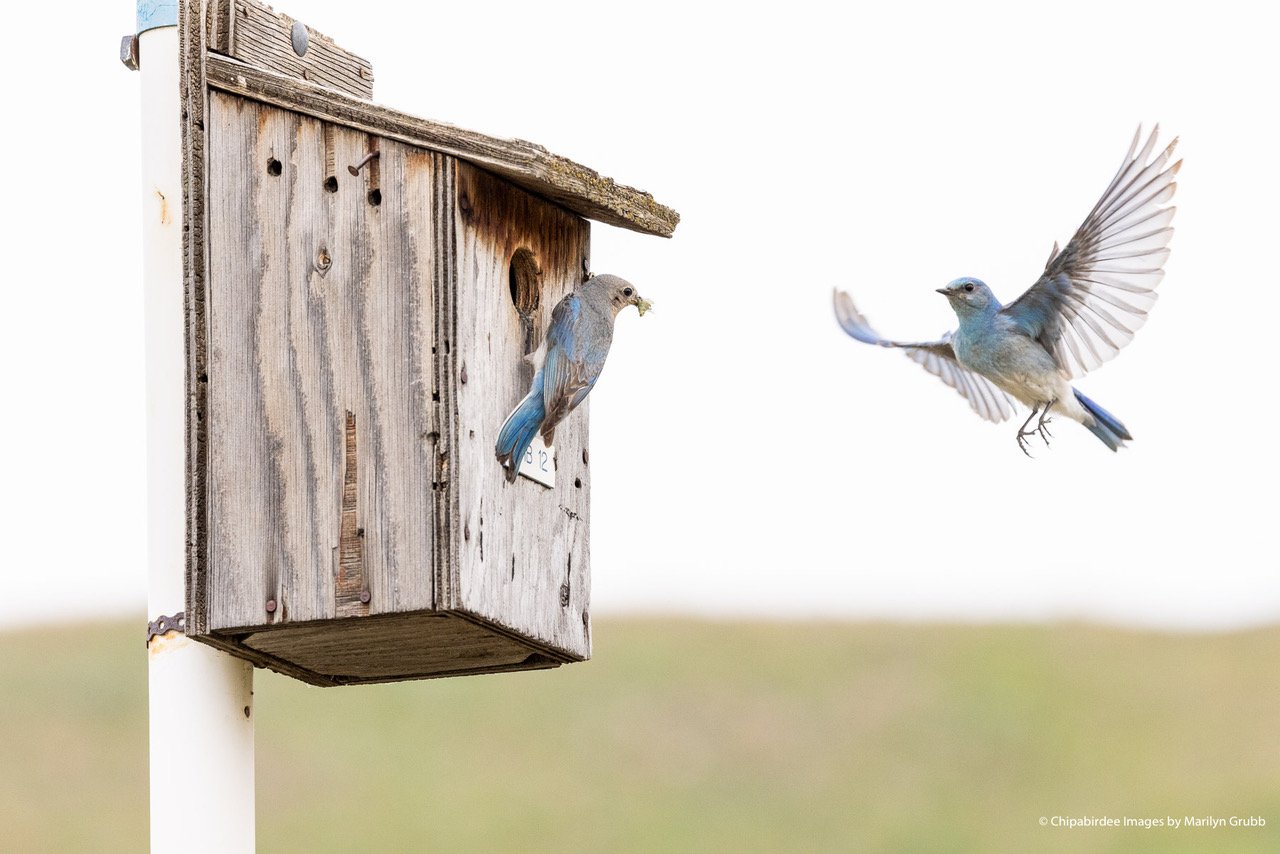Building a Mountain Bluebird nest box: A guide to supporting local wildlife
Imagine the vivid flash of beautiful cerulean-blue that is a Mountain Bluebird fluttering back to its nest.
Bluebirds are a breathtaking sight for bird watchers. They play a vital role in our ecosystem; consuming a variety of insects and regenerating ecosystems through seed dispersal. They also serve as an indicator species given their sensitivity to changes in their environment.
Due to extensive land clearing and changes in their natural habitat, Mountain Bluebirds continue to lose their traditional nesting sites.
By building a nest box, you can provide Mountain Bluebirds and other similar cavity nesters with a safe place to thrive. There is also the added bonus of being able to observe their vibrant lives up close!
Choosing the Right Materials
The best nest boxes start with the right materials. Use exterior-grade fir or cedar plywood—these woods stand up to the elements without harmful chemicals that can affect the birds. Avoid using pine as its strong resin can deter the birds.
Using high-quality materials can create a durable nest box that may last for decades, potentially supporting thousands of fledglings over its lifetime.
Designing Your Nest Box
We always recommend using the Mountain Bluebird Trails Conservation Society’s official design.
Our design has been tested through five decades of research and observation. We know it works for us, so it should work for you if you live in Southern Alberta.
Entrance Hole
Precision is key. Size the hole exactly 3.97 cm (1 and 9/16 inches) diameter to ensure it’s welcoming to Mountain Bluebirds. If the hole is too small, it will damage their feathers. If it is too large, it will invite other larger size birds.
Roof Overhang
Protect vulnerable nestlings from the elements. An overhang sloping at a 22.5-degree angle above the entrance does the job nicely.
We also recommend adding a 1.5” x 3” metal ridge cap to protect the peak of the nest box from driving rain or snow.
Ventilation
Small 6-mm holes near the top of each side wall will keep the air inside fresh. Angle them upwards to prevent rain from getting in.
Drainage
Similarly, add a few holes in the floor to let any water that gets in drain away easily.
Using our design also ensures a drop-down floor, making the end of season care easier and safer.
Construction Tips
Saw Kerfs: Adding horizontal grooves below the entrance hole inside the box helps the young birds climb out when it’s time to fly.
No Perches Needed: Skip the perch. It might seem helpful, but it actually invites predators and competing birds.
Assembly: Use screws, not nails, for assembling your box. Screws make it easy to open the box for annual cleaning and repairs.
Finishing Touches
DO NOT paint the inside of the nest box! Birds need rough surfaces for their tiny feet to grip onto.
You do not need to finish the outside of the nest box. Our observations suggest that Mountain Bluebirds prefer aged and weathered wood. Perhaps it helps to camouflage and provide protection from predators.
If you insist, you can finish the exterior of the box with a light-colored, non-toxic wood stain to help protect the box from the elements and keep it looking natural.
Installation and Care
Choose a quiet spot to mount your nest box, facing away from prevailing winds and out of direct sunlight. Keeping the box at least five feet off the ground will safeguard the nest from ground predators and give you a better view of the comings and goings.
Predator Guards
To enhance safety, consider installing predator guards. These can be simple metal collars or more elaborate designs depending on your local wildlife.
Review our official recommendations for predator guards.
Make It Official
Label your box with “MBTCS-Year Built ## - Box #” to keep track of your boxes and contribute data to local bird conservation groups. Monitoring who moves in and out can be incredibly rewarding and provides valuable information for conservation efforts.
The data you collect and submit from monitoring nest boxes is an important citizen science project. Providing the perfect opportunity to involve your family and friends!
Learn more about making your trail part of our official network.
Why does it matter?
Every nest box you build is more than just a woodworking project; it's a lifeline for a Mountain Bluebird.
Not only are you aiding in the conservation of these magnificent birds, but you're also setting the stage for years of joyful bird watching.
Now imagine sitting back with a cup of coffee and watching as your efforts pay off with a flurry of bluebird activity—that’s something truly special.
Happy building and bird watching!










